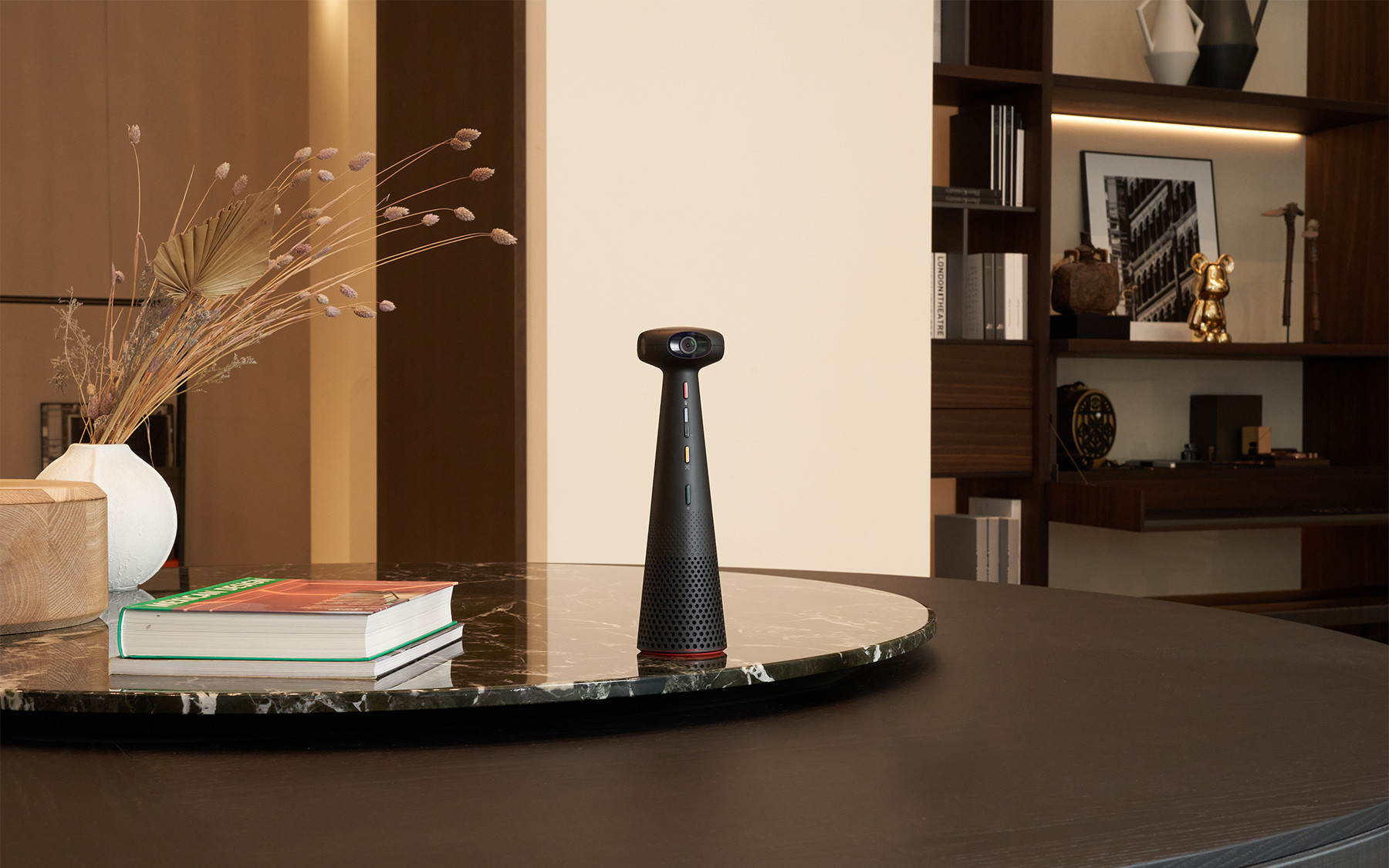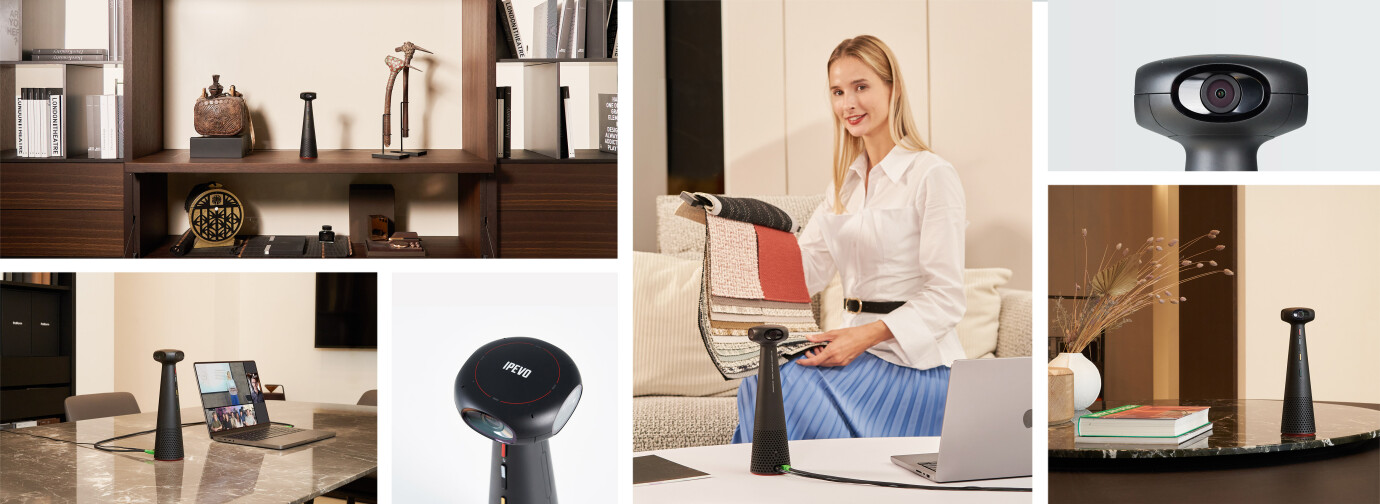















£682.80*
- Resolution 1920 x 1080 Full HD
- Field of view 360°


Product information
Create an immersive conference platform for your teams, your papers and your presentations.
360° video and sound
IPEVO TOTEM 360, a complete audiovisual solution, provides a seamlessly stitched 360° image from four cameras, sound from an omnidirectional speaker and voice capture via an array of four beamforming microphones with AI noise reduction.
Video stitching technology
Capture the entire room using four cameras that provide a seamlessly stitched 360° image in 5K, free from spatial distortion.
Four beamforming microphones
The microphones pick up sound from all directions, and thanks to beamforming technology, they are able to determine the direction of the sound. This is used to track the active speakers.
360° sound dispersion speaker
The TOTEM speaker surrounds its entire base and spreads sound evenly in all directions.
KI noise reduction
Filters out the background noise in your conference room for distraction-free communication where no one is left out.
Immersive video modes for every scenario
Hybrid meetings
Conference mode

A 360° view of the conference room table, highlighting up to four speakers in individual close-ups.
Surround mode
In this mode, the 360° view is split into two horizontal screens, allowing a clear view of everyone at the table.
Training and presentations
Hybrid learning mode
Shows the speaker and course participants simultaneously, with the speaker being tracked by the AI.
Presentation Mode
A directional video mode for presentations that uses AI to track up to two presenters.
Works instantly with anything

Plug-and-play compatible with Zoom, Google Meet, Webex, GoToMeeting, Skype, Microsoft Teams, Barco ClickShare, and more on Windows, Mac and Chromebooks.

Technical data
| Name | IPEVO TOTEM 360 Conference Camera, 1920 x 1080 Full HD, 30 fps, 360° |
|---|---|
| Article number | 1000029304 |
| GTIN/EAN | 4712098412110 |
| Manufacturer SKU | 5-906-2-08-00 |
| Model name | TOTEM 360 |
| Brand | IPEVO |
| Product Type | Conference Camera |
| Resolution | 1920 x 1080 Full HD |
| Frames per Second | 30 fps |
| Focus type | Manual focus |
| Field of view | 360° |
| Inputs | 1x USB-A |
| Product width | 7.2 cm |
| Product height | 25.5 cm |
| Product depth | 7.2 cm |
| Weight | 0.575 kg |
| Colour | Black |
| Delivery contents | Quick user guide , USB-C Cable |
| Condition | New |
| Warranty | 24 Month |
| Warranty type | Bringin service Service and support information |
Product safety
| Person responsible for the EU |
|---|
| IPEVO B.V. |
| Beursplein 37 |
| 3011AA Rotterdam |
| Netherlands |
| eusales@ipevo.com |



